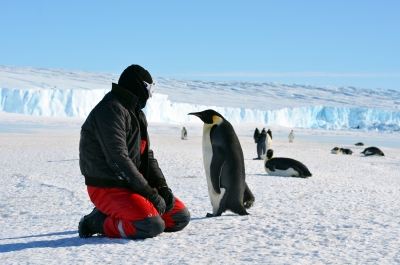
Earths fifth largest continent is also its coldest windiest, and driest. Antarctica, spread over about 15 million sa km. is also the only continent that has no permanent residents. But its one of the most important regions due to the kind of impact it has on global climate and ocean systems. It is a natural laboratory, with its thick icesheets offering is more than just a peek into what our planets climate was like over a one million years ago. The region is also an indicator of the overall health of our planet. It is for all these significant reasons and many others that scientists from several parts of the globe continue to study the region meticulously.
Wildlife
Due to its expansive ice cover, the region does not support a wide variety of plant or animal life. While there are no trees or shrubs, there are lichens, grass and algae, among others. However, it has a rich marine life. The waters are abundant in krill, a shrimp-like marine creature that is integral to the Antarctic marine food chain The areas in and around the continent nurtures several species of fish, squids, whales (including killer whale and blue whale), dolphins, and seals. Among Antarctica’s most popular residents are emperor and Adelie penguins, endemic to the region. Other penguin species found in the region include chinstrap and gentoo penguins. In addition to these flightless birds, petrels, albatrosses, cormorants, gulls, and terns can also be spotted here. Apart from these, the native land fauna predominantly comprises invertebrates, and the region is devoid of completely terrestrial predators.
Threats
Warming
The size of the southernmost continent varies according to the seasons. For instance, in winter, expanding sea ice along the coast increases the continent to almost twice its size. But this may not be the case for long. Antarctica has become one of the places in the world to experience fastest warming – five times faster than the global average. This is leading to a chain of interrelated events. First there is increasing ice melt and breaking of ice shelves, threatening to cause a rise in sea levels. Warming waters of the Southern Ocean too add to the breaking up of ice shelves. Further, adapted as they are to the cooler waters, the krill in these waters are being impacted negatively In the longer nun, this could affect larger creatures such as whales creating an imbalance in the food chain Shrinking ice cover also affects penguins because their habitats are shrinking
Human impact
The presence of humans – as both tourists and scientists / researchers – has a huge impact on this fragile continent. From accidental introduction of invasive species and fuel spill through transport vehicles such cruise ships to scaring off native wildlife and damaging the environment, human presence in and around Antarctica is a very real threat. In addition, excessive sealing, whaling, fishing, etc too have a negative impact on the natural balance of the region.
Did you know?
- Antarctica is a desert with hardly any precipitation – the inner region is said to receive about 50 mm of snow every year.
- Since Antarctica lies completely in the Southern Hemisphere, the seasons occur differently. Here’s how it works – it is summer from October to February, and winter spans the rest of the months.
- The continent is divided into East and West Antarctica, and these regions are separated by the imposing Transantarctic Mountains. East Antarction is the larger of the two, and West Antarctica comprises frozen islands, extending till the southern tip of South America.
- For years, the reason for the colour of Blood Falls in Antarctica was a mystery. Named for its unusual blood-red colour, it was earlier imagined that red algae was responsible for the colour. However, a few years ago scientists solved the mystery. The Falls flows from the Taylor Glacier, beneath which are subglacial rivers and a subglacial lake. These waterbodies are loaded with brine rich in iron giving the Falls its famous colour.
Picture Credit : Google




